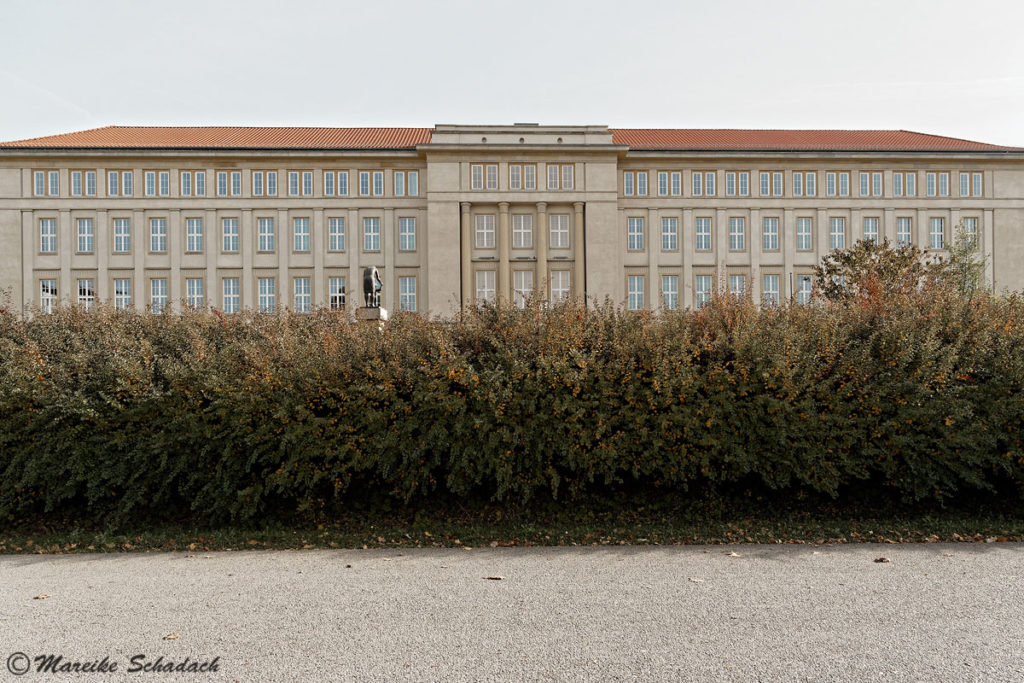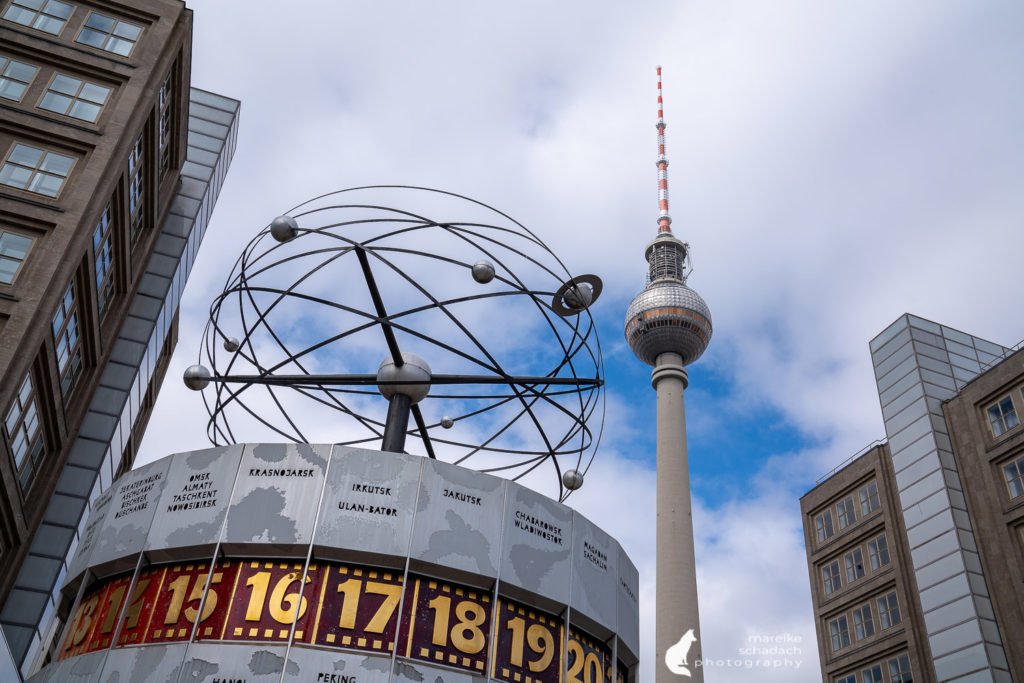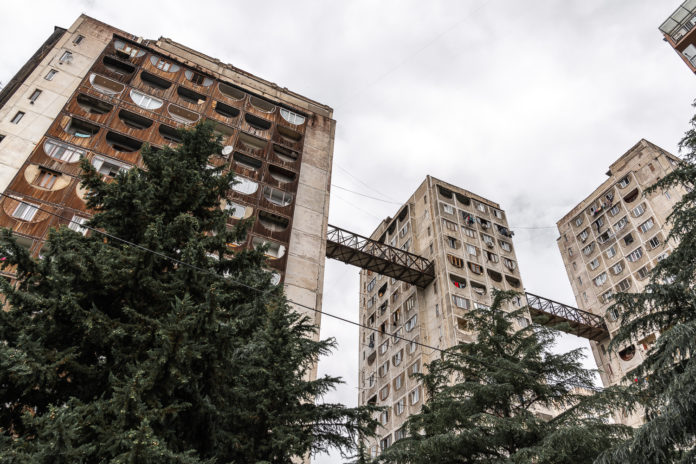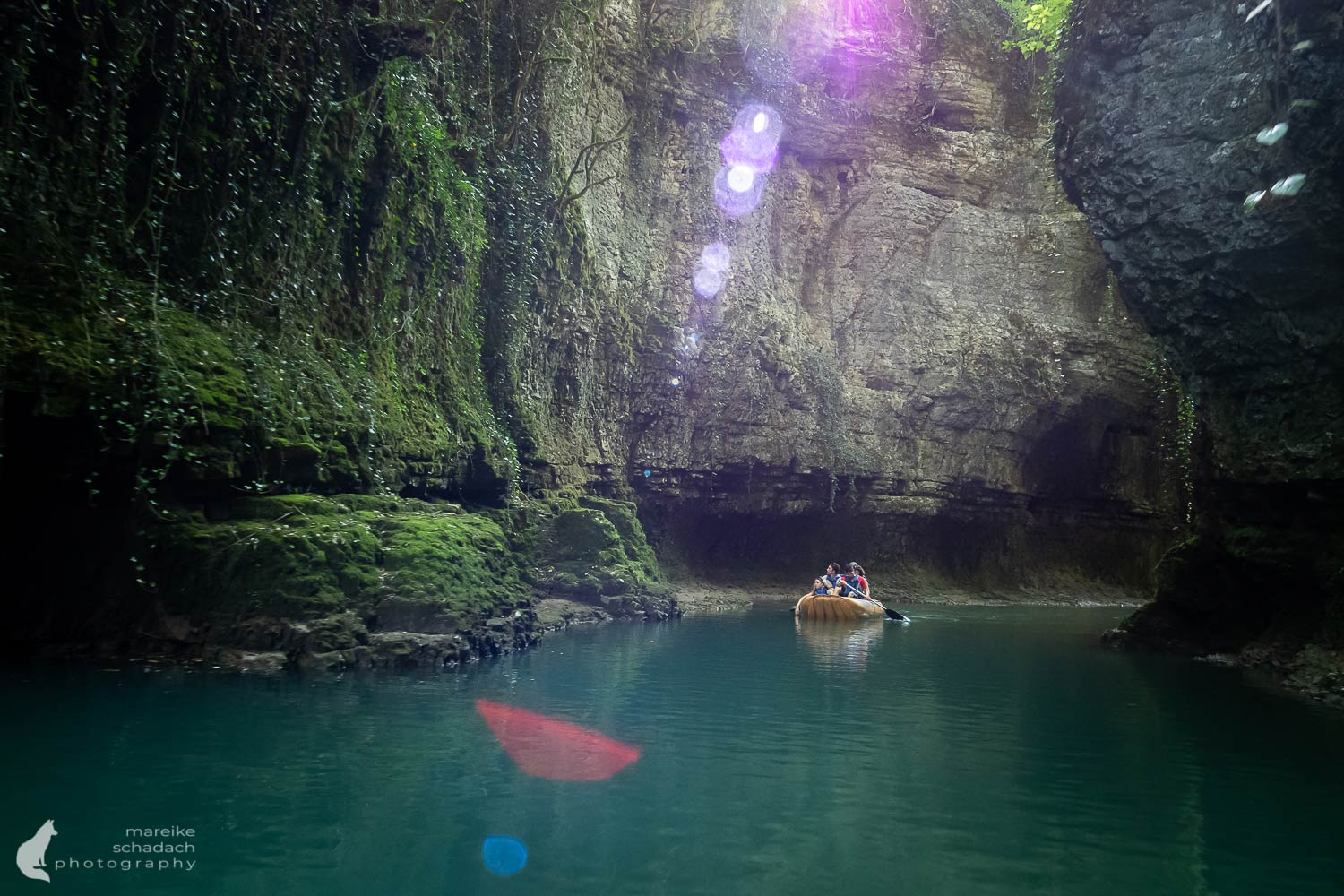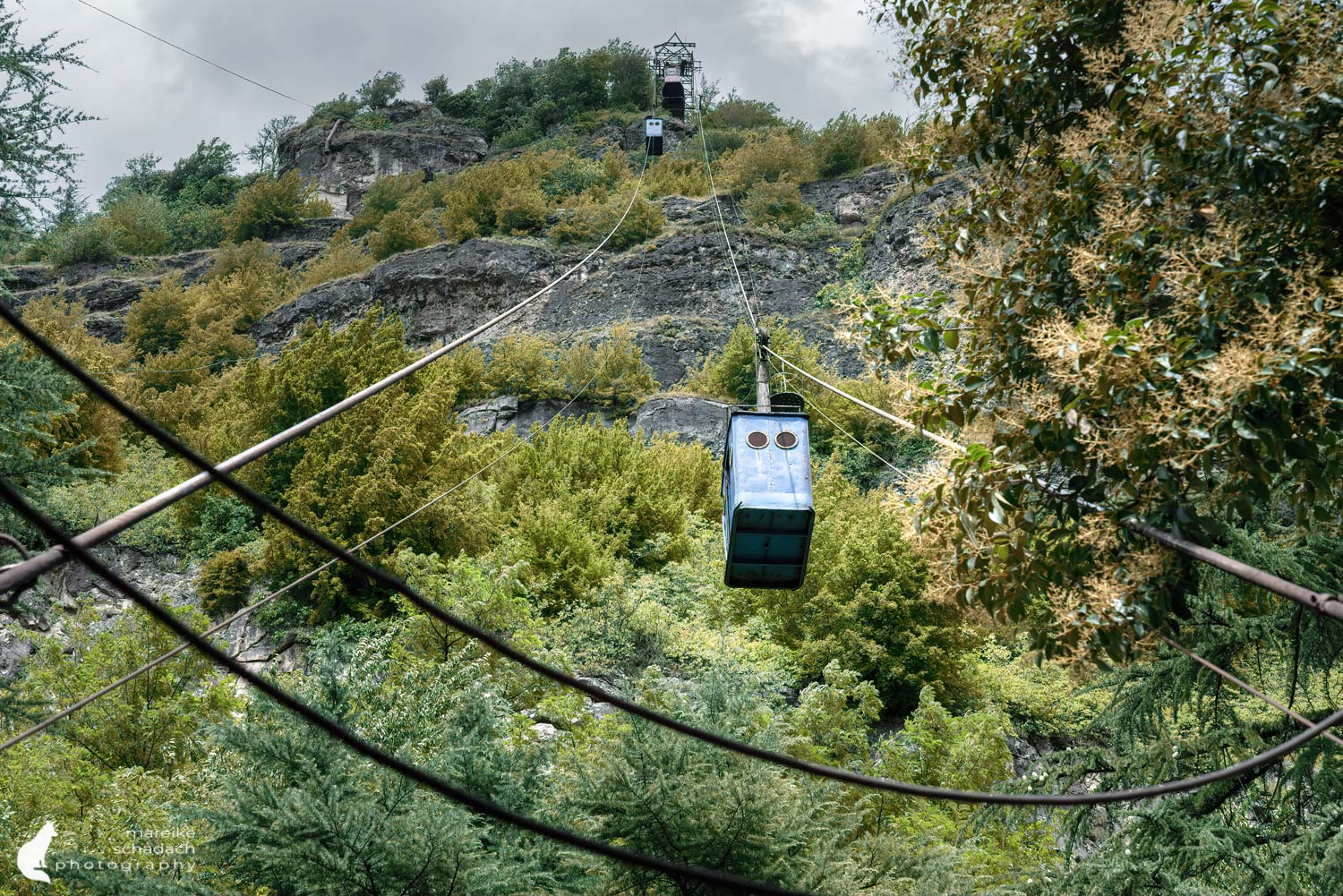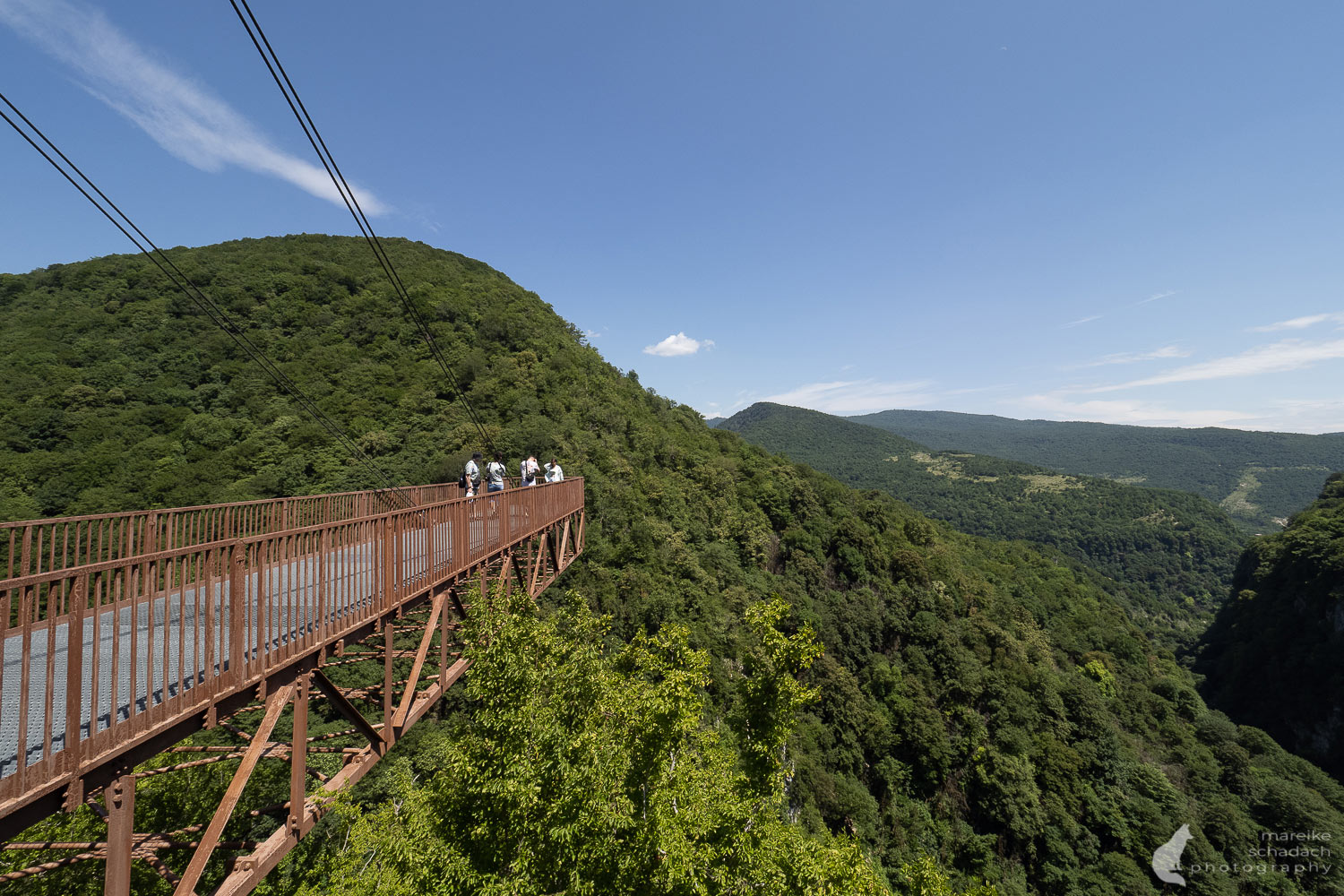Georgia. During the Soviet times, many impressive buildings were built in the former Soviet Union. Especially the bizarre, futuristic-looking buildings in the style of Soviet Modernism and Brutalism attract attention. And if you look closely, you can even discover large-scale mosaics or reliefs on some of the buildings. Also in Tbilisi, the capital of Georgia, unique icons of Soviet architecture and Brutalism were created during this time.
Non-solicited, unpaid advertising. This article contains affiliate links*, marked with an asterisk.

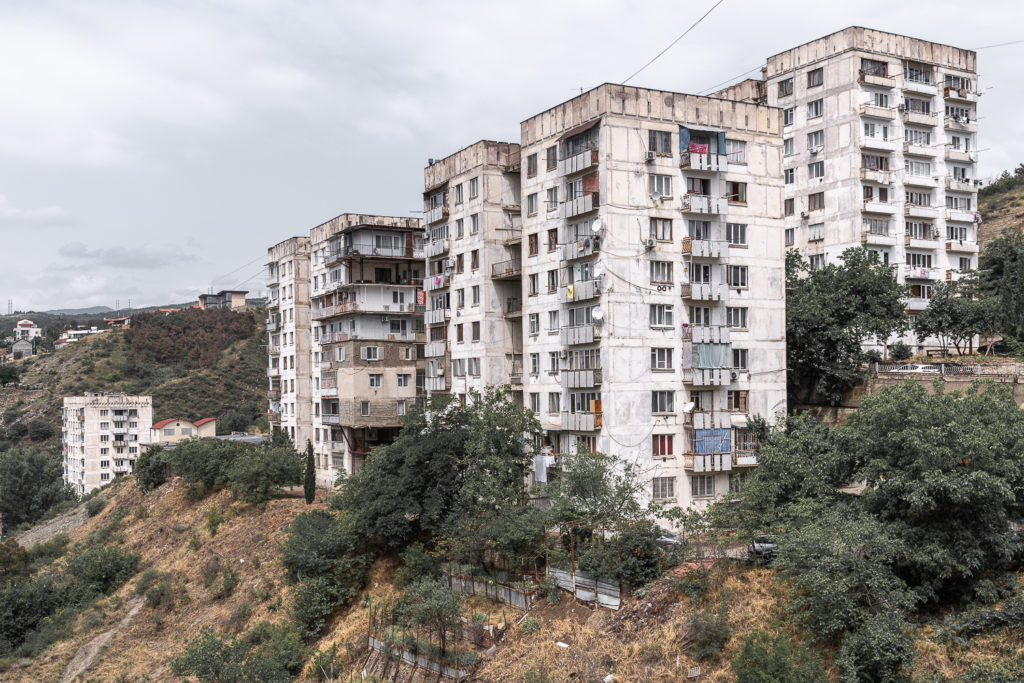
If you are interested in Soviet architecture, you will love Tbilisi!
We took a guided tour of Tbilisi's Soviet architecture and Brutalism with expert Nini Palavandishvili. This was comfortably by car through the city center as well as to the outskirts of Tbilisi. If you have a little more time, it is also possible to visit the buildings by public transport.
Other worthwhile day trips from Tbilisi include a visit to the Vardsia Cave Monastery*or a tour of the legendary Cable Cars of Chiatura*.
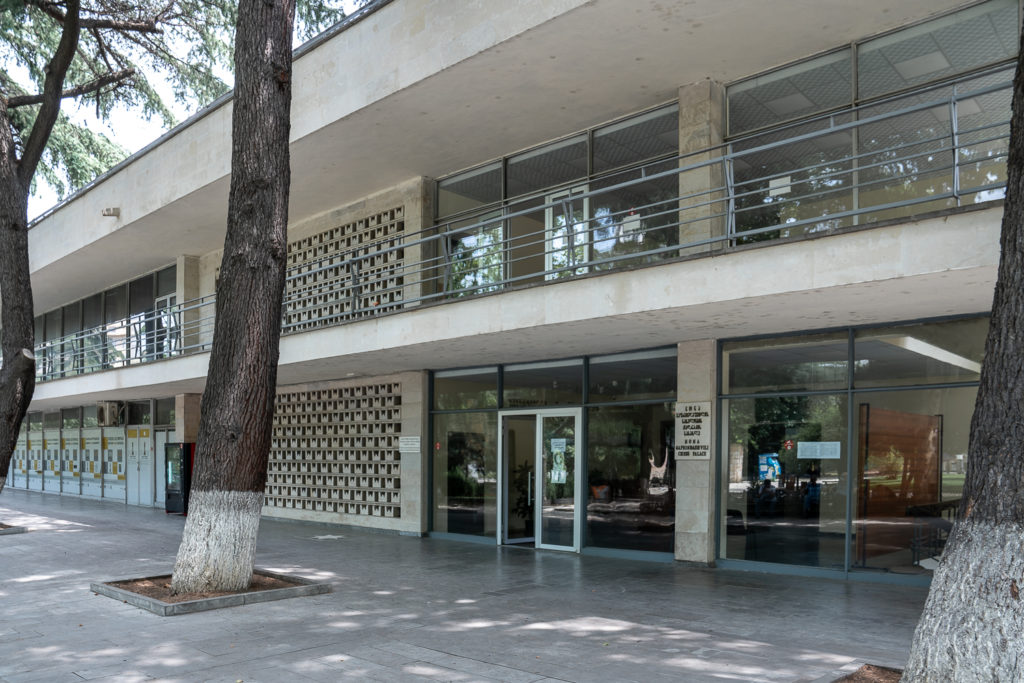
Yesterday's Visions of the Future: Soviet Architecture in Tbilisi
When one hears the term "Soviet architecture", one has in mind either the monumental buildings in the Zuckerbäcker style or the futuristic buildings of Soviet Modernism. Both architectural styles are very different. Here is a brief overview:
Soviet Realism (Classicism) 1950-55
In Stalin's time, architecture was not only a question of functionality and aesthetics, but rather a question of attitude. The general happiness promised by the communist worldview included people living in magnificent palaces. Urban planning was subject to certain rules and development plans, and architects planned according to strict specifications. Public buildings in particular were supposed to impress with their architecture and were seen as signposts to the future. Soviet Realism is also often called Zuckerbäckerstil "wedding cake style". This is because the often monumental buildings with their lavish decorations quickly make one think of the form and decoration of wedding cakes. The death of Stalin was also the end of this architectural style.

By the way, you can also see beautiful examples of the Zuckerbäckerstil during a walk along Karl-Marx-Allee (formerly Stalinallee) in Berlin .
Soviet Modernism from 1955 to 1991 and Brutalism
While Soviet Realism can still be seen as a signpost to the future, Soviet Modernism has arrived in the future. The buildings seem futuristic, stand out and somehow fall out of concept.
Soviet Modernism and Brutalism, unlike Soviet Realism, seem to dispense with any guidelines. Each building is different and unique. Sometimes the beauty of the buildings is only apparent at second glance, often they are scorned as an ugly legacy from the Soviet era. But those who take a closer look are quickly taken in by the architecture, which seems to follow no rules whatsoever. Unfortunately, many of these buildings were abandoned after the collapse of the Soviet Union, fell into disrepair and were demolished.

The roots of Soviet Modernism were laid by the French architect Le Corbusier. Particularly impressive are the buildings created in the late Soviet phase from the 1960s to the beginning of the 1980s. They are classified as "Soviet Brutalism". The term brutalism does not stand for brutality but for "béton brut". This is French and means "raw concrete" in German. This architectural style was significantly influenced by the architect Le Corbusier. Characteristic features are simple geometric shapes, emphasis on the construction itself and the use of exposed concrete.
In the buildings in the style of Soviet Modernism, instead of the raw concrete also often used cladding materials, such as marble, sandstone, shell limestone or cheaper substitute material.
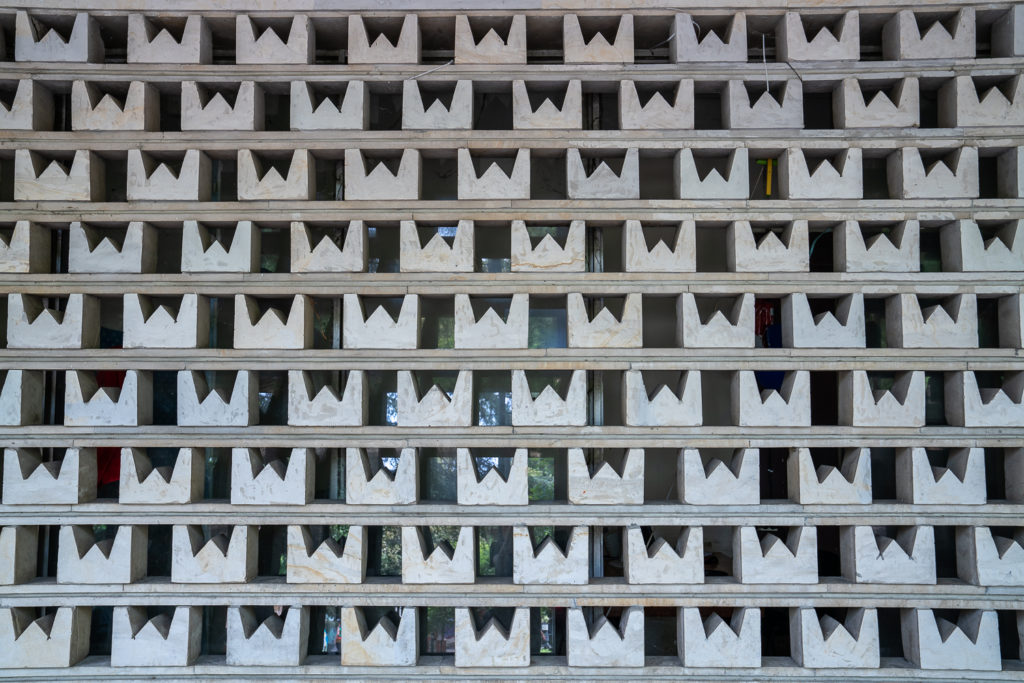
Mosaics and reliefs of the Soviet period
As early as the 1930s, art was used to spread communist propaganda. Numerous large-scale mosaics were created, decorating the facades of buildings or even bus stops. They depicted scenes from the world of work, science, technology, as well as family and sports. In the Soviet republics further away from Moscow, national and folkloric motifs were also mixed in.
The commissions for the mosaics were given centrally to mosaic workshops. As a result, the artists who created the mosaics are often not even known. Only since the last years a systematic documentation of the still existing mosaics takes place. Just like many buildings of Soviet architecture and Brutalism, many of the works of art in Tbilisi are unfortunately already lost, dilapidated or built over.

Long tested and much loved: my three companions on photo tours: the lightweight carbon tripod CT-5C I from Rollei*, the cleaning kit from Rollei*and my indestructible camera backpack, the Flipside from Lowepro*.
Bank of Georgia (former Ministry of Road Construction)
The former Ministry of Road Construction is a timeless appearance of floating blocks stacked on top of each other à la Tetris. It is one of the most important buildings of Soviet architecture in Tbilisi and even in all of Georgia. Even today, the building is a real eye-catcher.
When planning the building, the architects followed the concept of the "space city", which is patented in Georgia. The idea is to use less floor space by building a house on columns. Nature should be less affected and light open spaces should be created, as between the tree trunk (the supports of the house) and the tree crown (the building's beams). In the end, everything should benefit the psychological well-being of the residents.
Since 2006, the building has belonged to the Bank of Georgia, which has used it as its headquarters since 2010. In 2007, the complex was listed as a National Monument.
Architects: Giorgi Chakhava, Zurab Jalagonia
Completion date: 1975
Address: 29a Iuri Gagarini St, Tbilisi, Gruzja
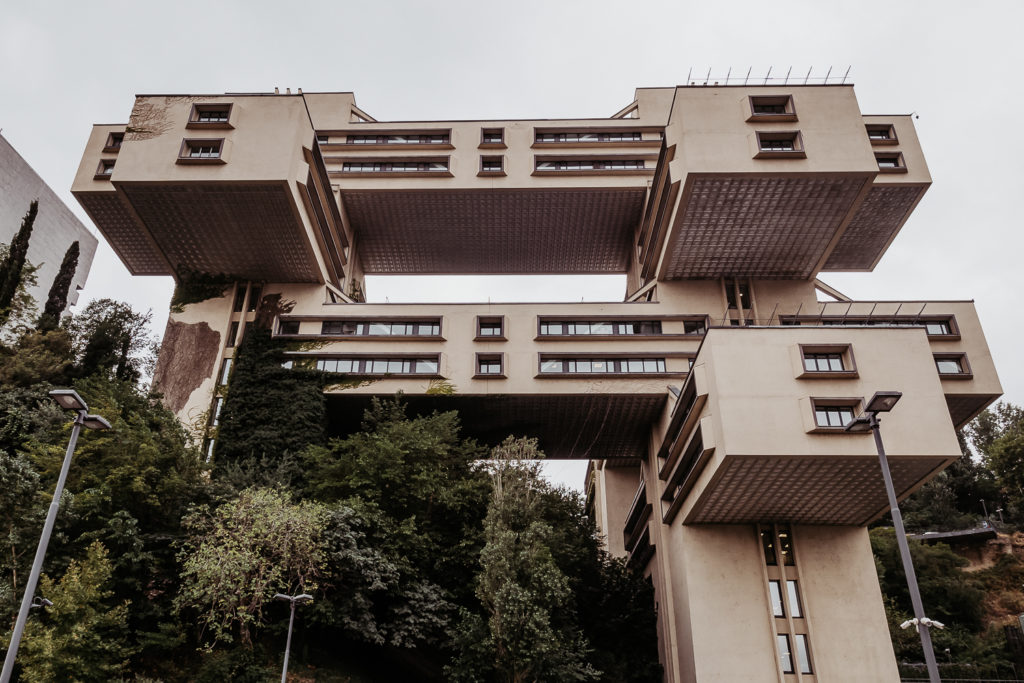
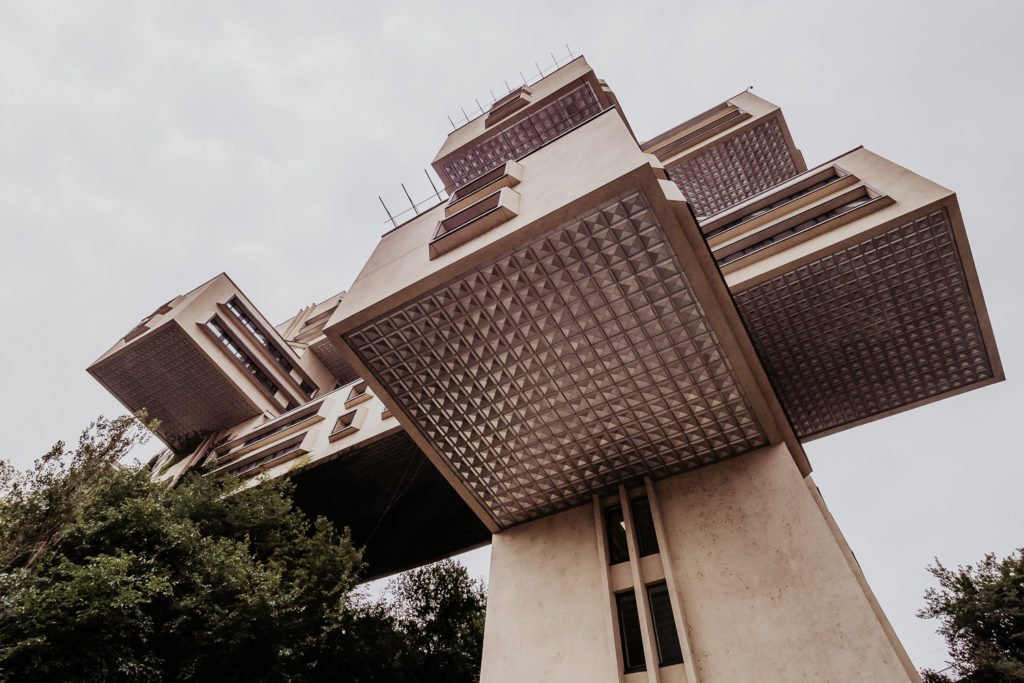
Tbilisi Skybridge
The skyscrapers on the outskirts of Tbilisi were among the most impressive pieces of Soviet architecture we visited. These three tall apartment buildings were built on the slopes in Nutsubidze Street. All three are connected by a skybridge. You can reach the bridge by taking the elevator to the 14th floor in the first block. For this you need a 20 Tetri coin, which you put into a slot machine in the elevator. I would not recommend the staircase, because it is mostly locked at the top. From the elevator you can walk over the bridge through the buildings. You will pass a small bench and a tiny store on the 14th floor. From the skybridge you also have a great view of the surrounding living quarters. At the end of the bridge you come out at the top of the slope on the street.
Architect: Otar Kalandarishvili, Gizo Potskhishvili
Construction period: 1974-1976
Address: Shalva Nutsubidze St, Tbilisi, Gruzja
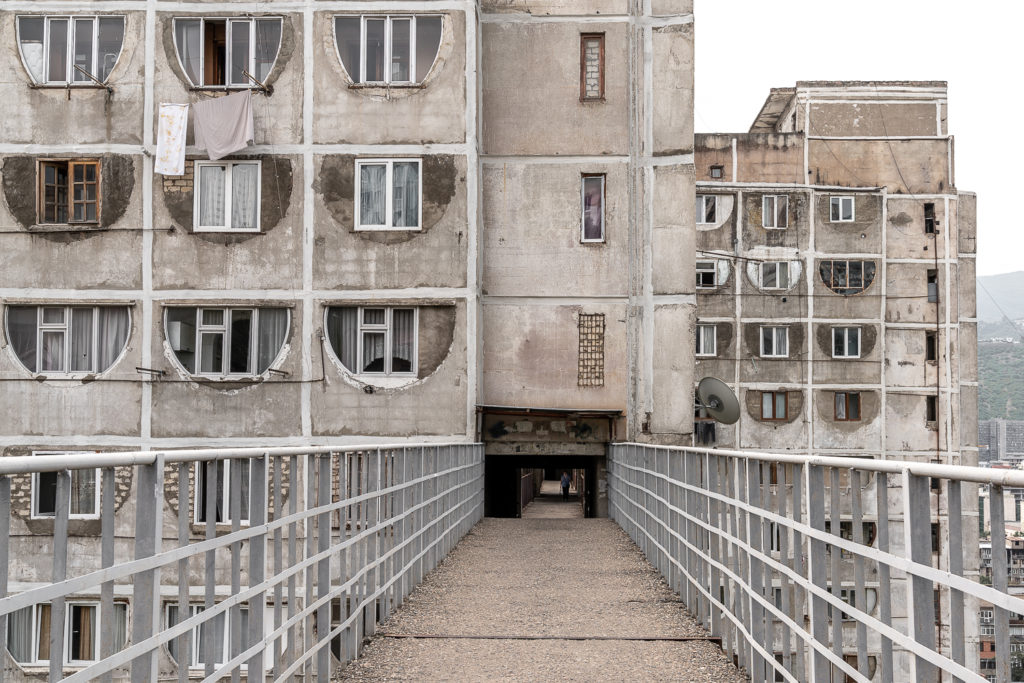
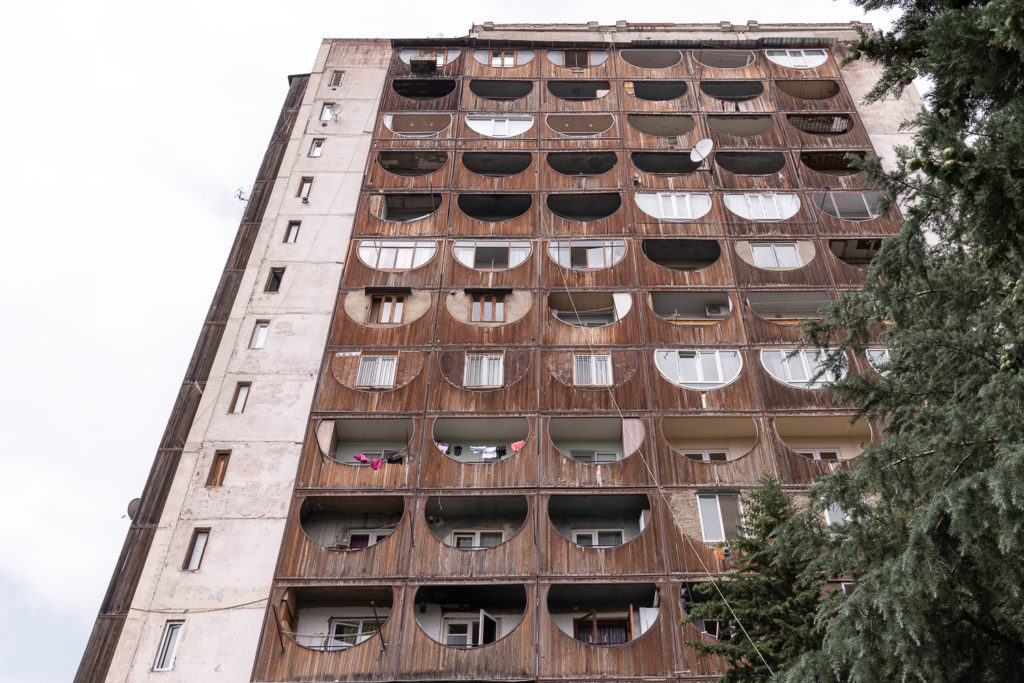
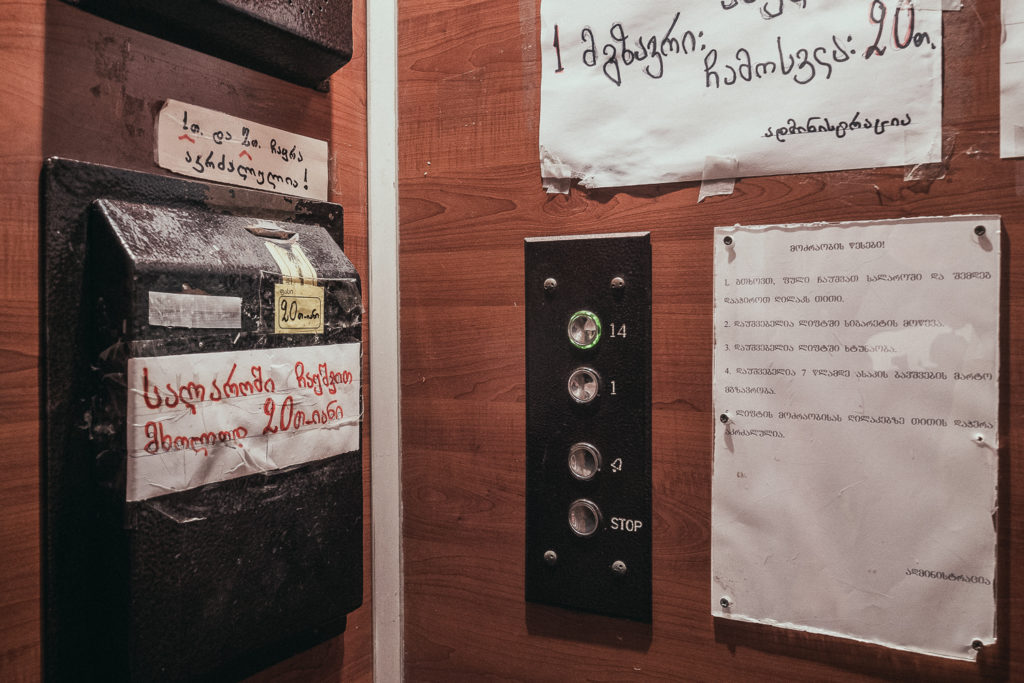
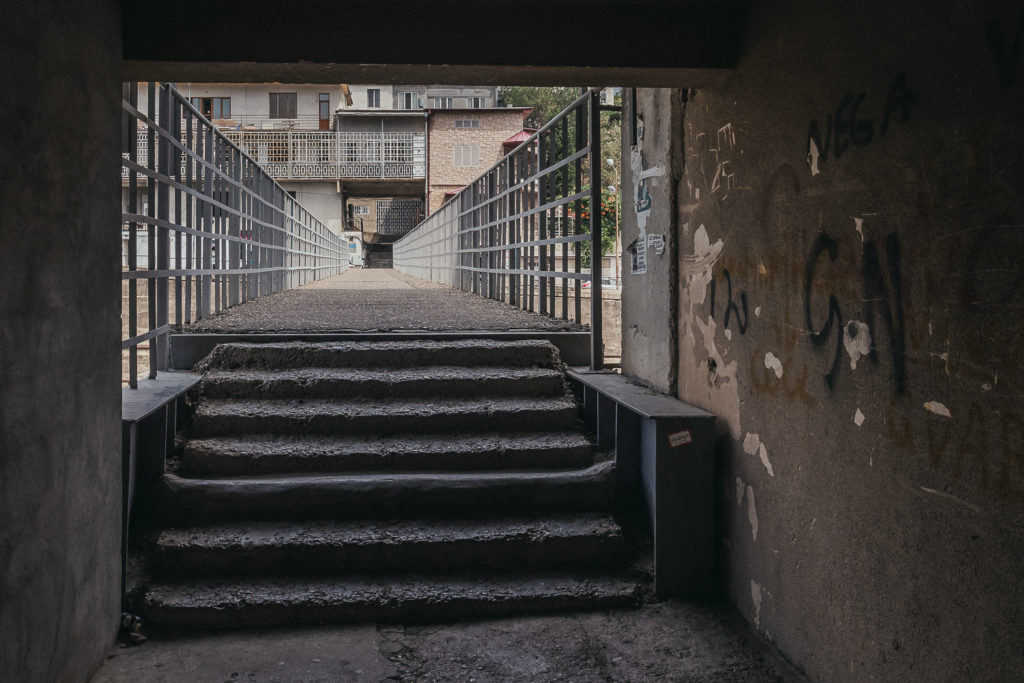
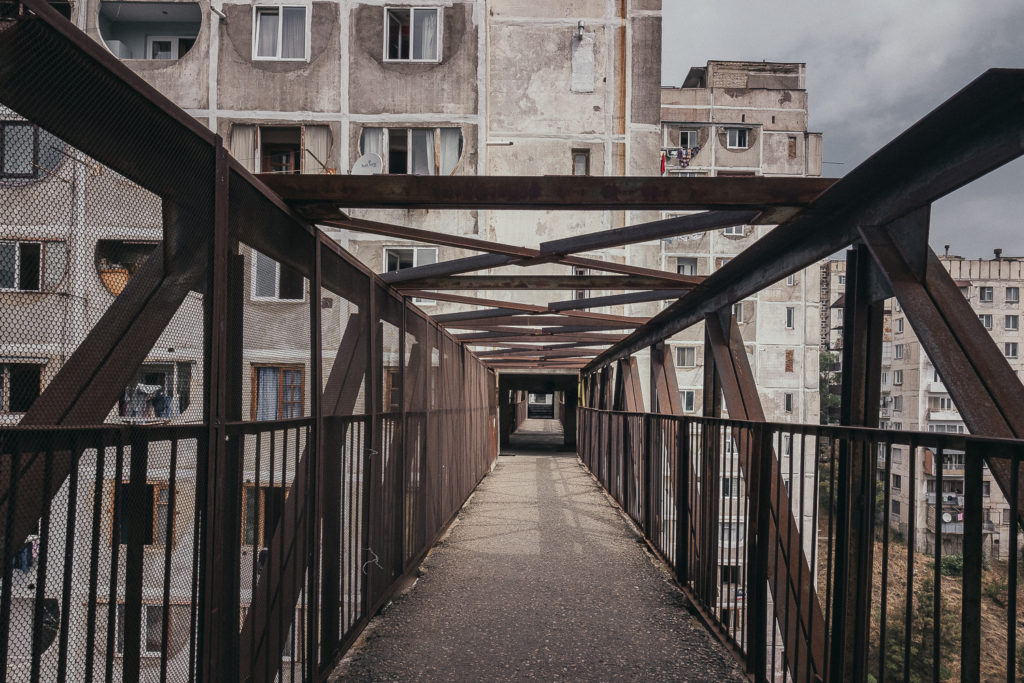
You are planning a road trip?
Travel Guide Book – Georgia – Caucasus*
This book by OunTravela invites you to explore the wildest corners of Georgia. Along 24 routes you will discover picturesque landscapes, rugged mountains, monasteries, fortresses, and centuries-old fortified towers. In addition to detailed descriptions of the 4x4 routes, you will find a wealth of additional information about the country and its people as well as tips for your planning. The latter range from suggestions for overnight campsites to rental companies of expedition-ready 4x4 vehicles and worthwhile photo spots. You can also purchase a map and GPS tracks for navigation.
Museum of Archaeology
The Museum of Archaeology is reminiscent of an Egyptian temple. It is perched on a hill right next to the Saint Nino Monument. Unfortunately, the museum has never been opened. Nevertheless, it houses an archaeological collection inside and is therefore locked and closely guarded.
Architects: Sh. Kavlashvili and Sh. Gwantseladze
Completion date: 1988
Address: 9, Motsikulta Stsori Nino St
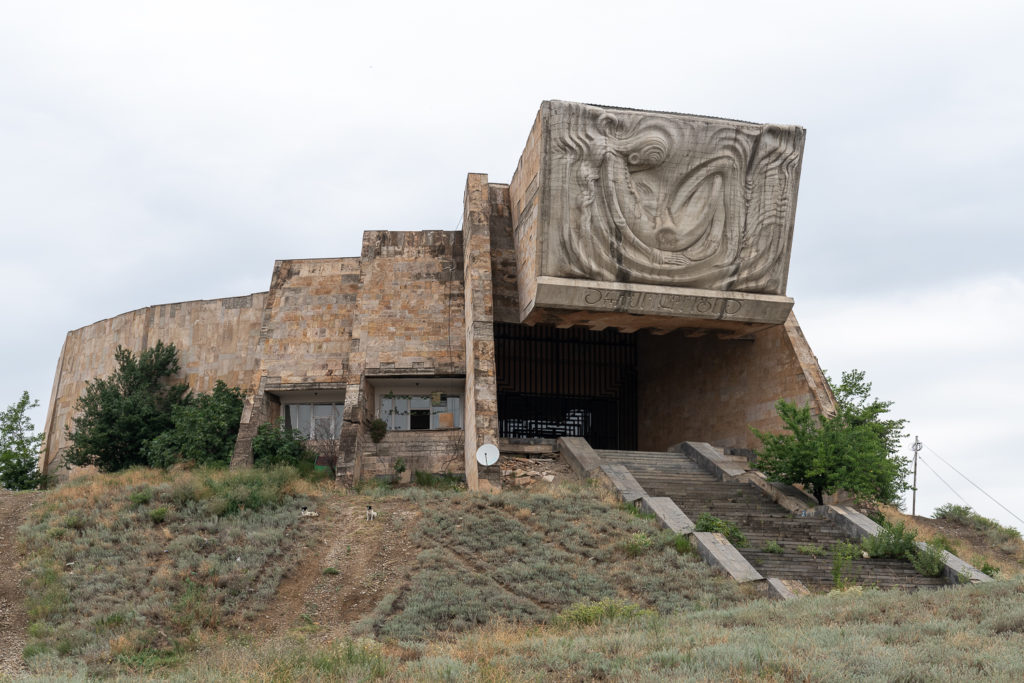
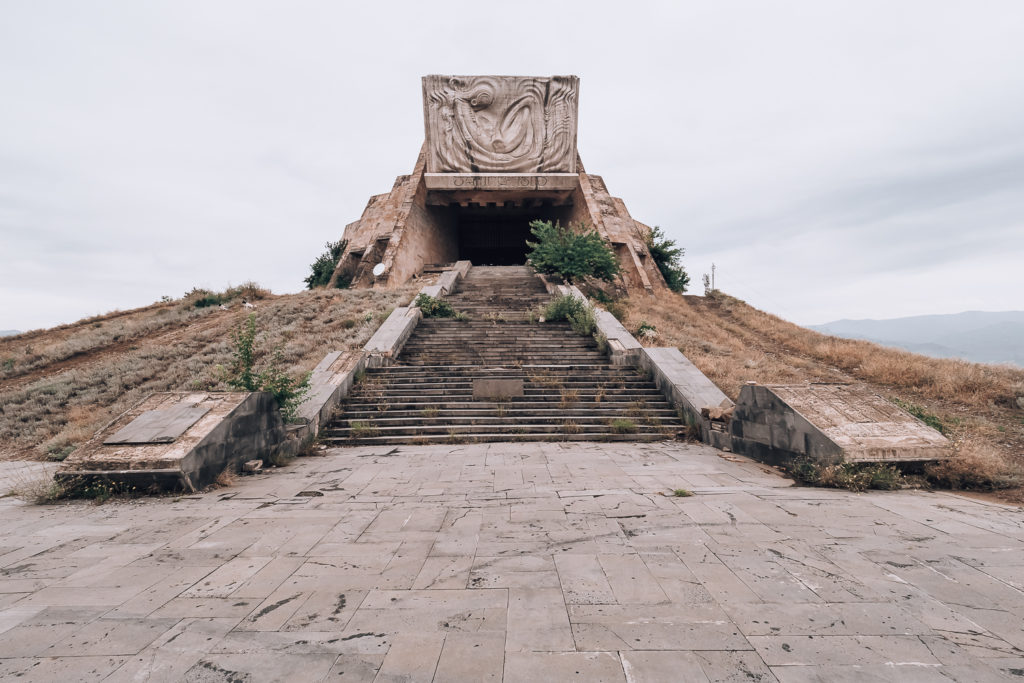

Mosaic at Saburtalo Fire Station
The huge mosaic on the facade of the fire station focuses on a fireman. Around him, several well-known buildings of Tbilisi can be seen. Among them is the medieval Metekhi Church, the Circus, as well as the Sports Palace and the former Iveria Hotel in the style of Soviet Modernism. In addition, the mosaic depicts buildings with Persian and Byzantine architecture. This juxtaposition is intended to illustrate that in Tbilisi East and West meet.
Artist: Givi Kervalishvili
Completion date: 1979
Address: Gorgasali St 34, behind Ortachala Bus Station
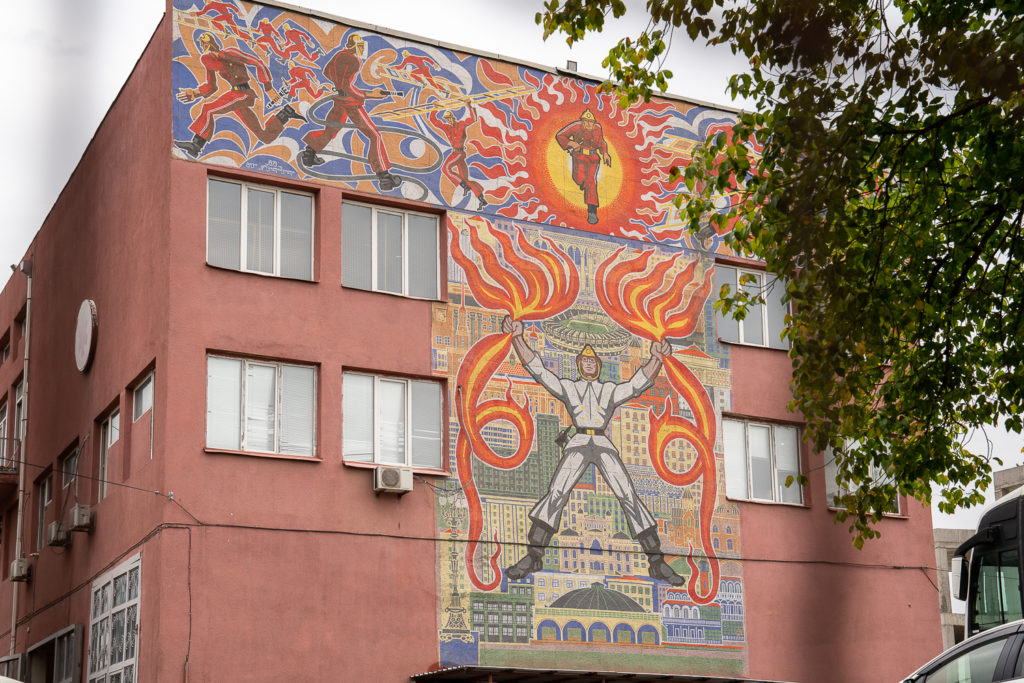
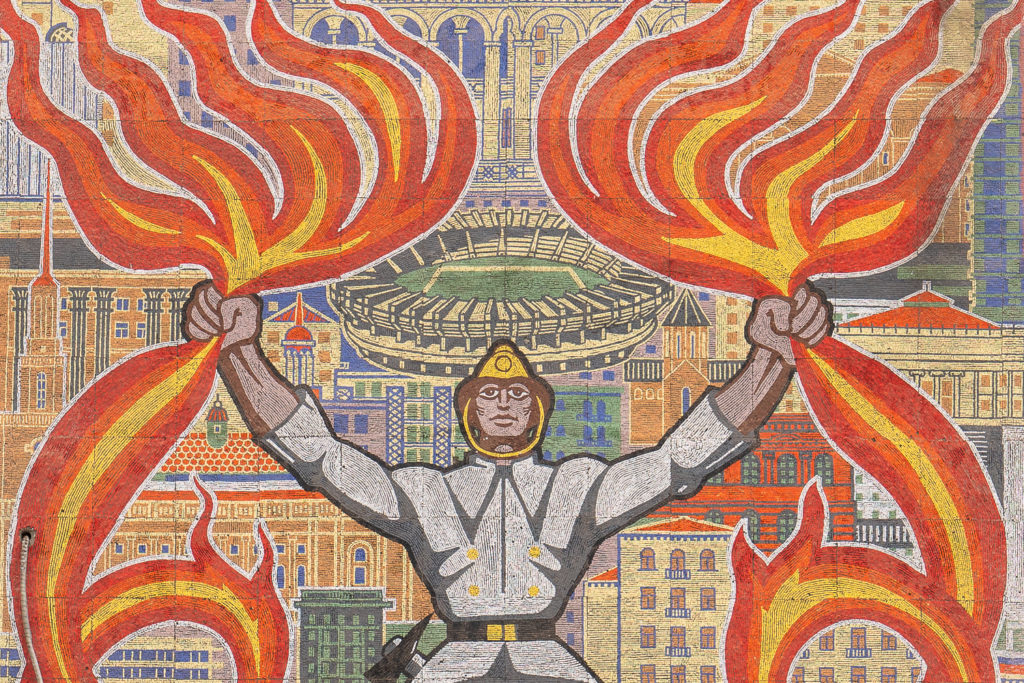
Ortachala Central Bus Station
Between 1964 and 1973, a new central bus station was built in Ortachala. This was designed to handle around 18,500 passengers per day. In addition to the actual bus stops, the station also includes restaurants, cafes, stores and a hotel. The facades of the building are clad with natural stone and in large part also glazed. Next to the staircase, the mosaic "History of Transport" by Zurab Tsereteli is placed on the facade.
Architects: Ramaz Kiknadze, Vladimir Kurtishvili and Shota Kavlashvili
Artist: Zurab Tsereteli
Completion date: 1973
Address: Ortachala Bus Station
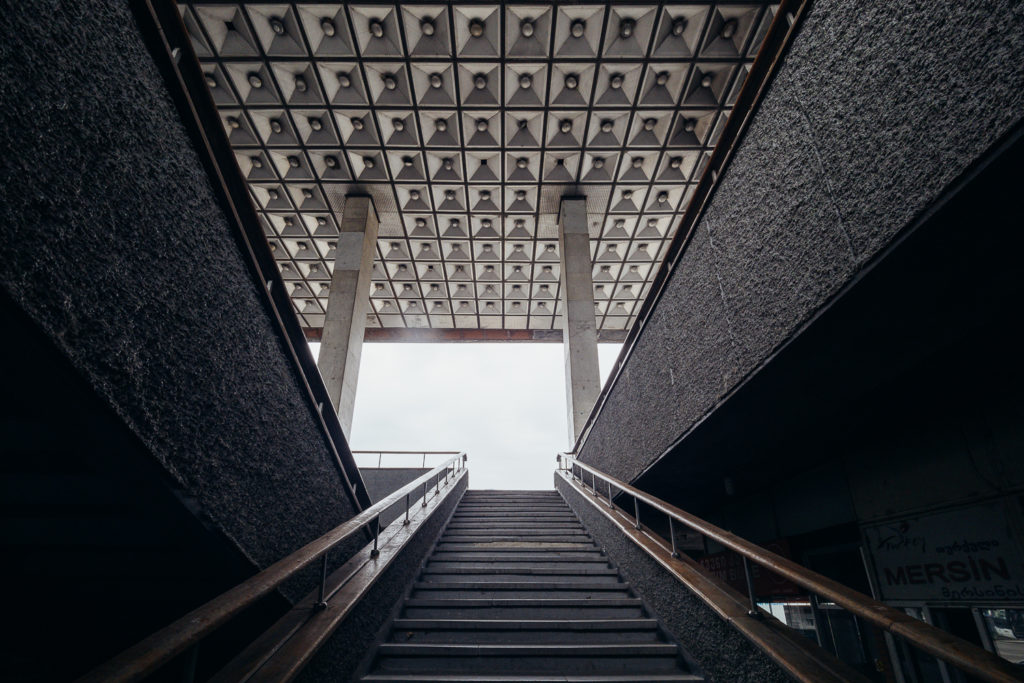
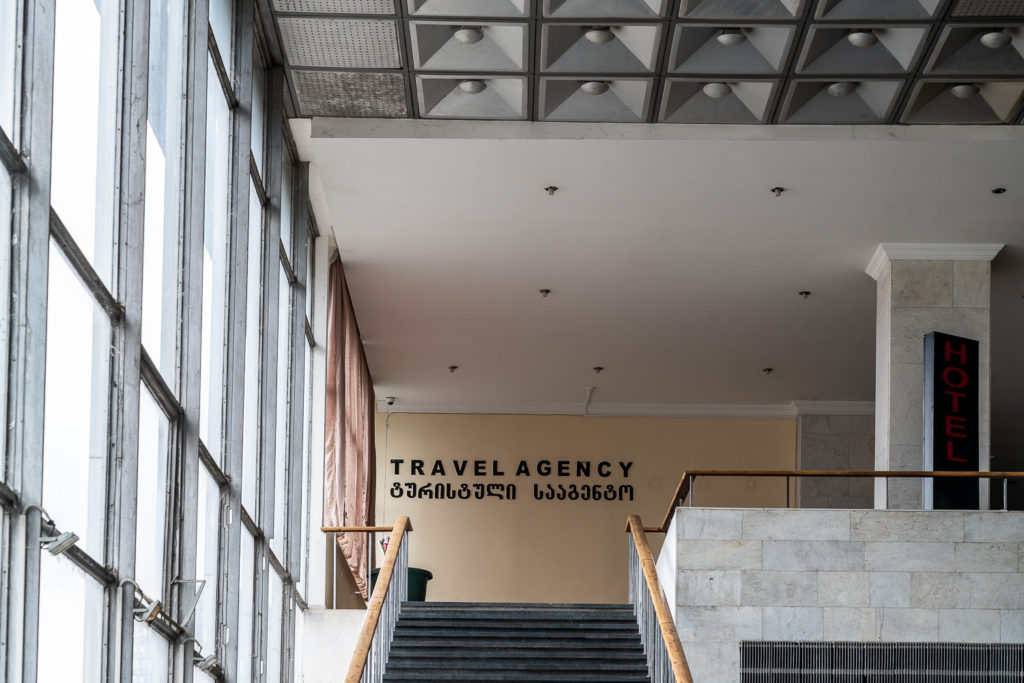
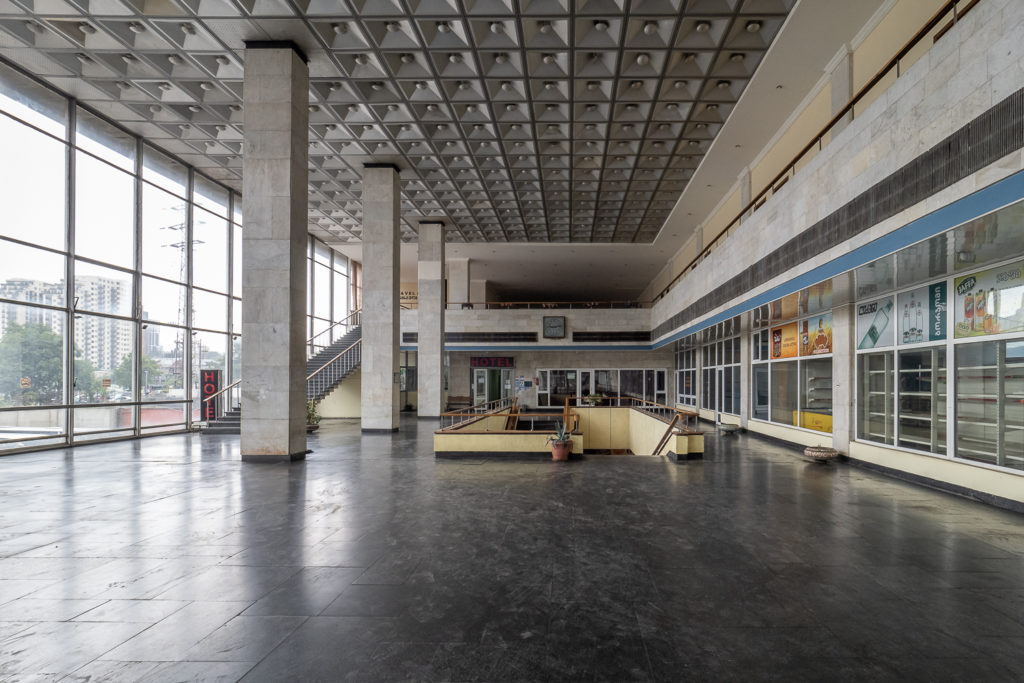
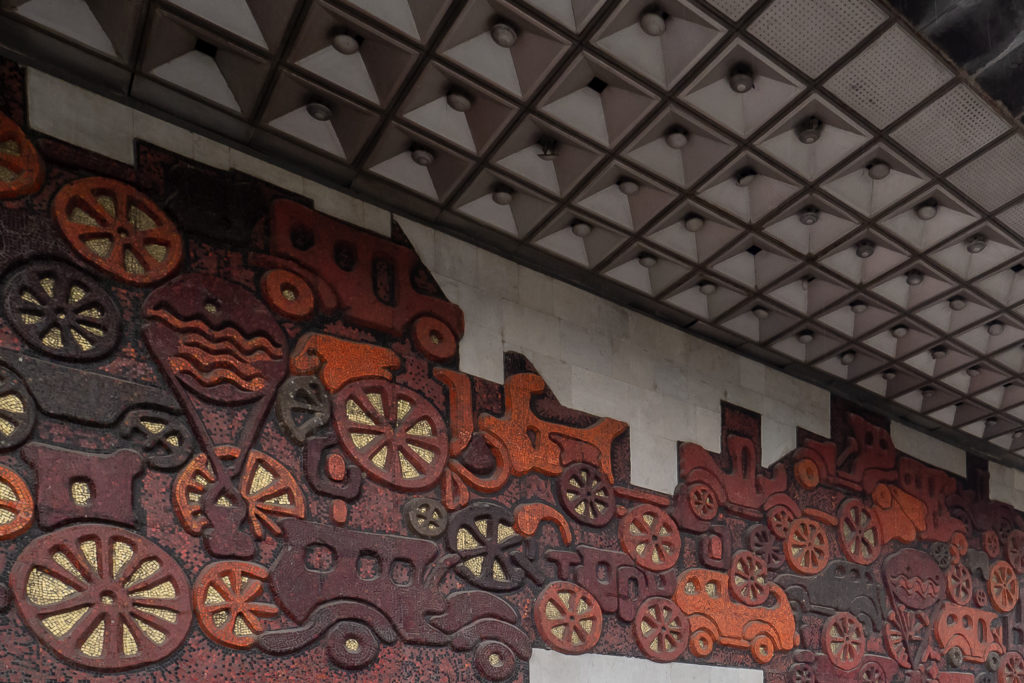
Book recommendations for architecture fans
Can't get enough of Soviet architecture and mosaics either? Then take a closer look at these three books*. You will love them.
Technical Library
Completed in 1986, the Technical Library is another prestigious object of Soviet Modernism and Brutalism in Tbilisi. The structure is an elongated bar surrounded by a dark concrete ring. The windows are framed by a seemingly endless repetition of fan-like concrete swords.
Architect: G. Bichiashvili
Completion date: 1986
Address: 47 Merab Kostava St
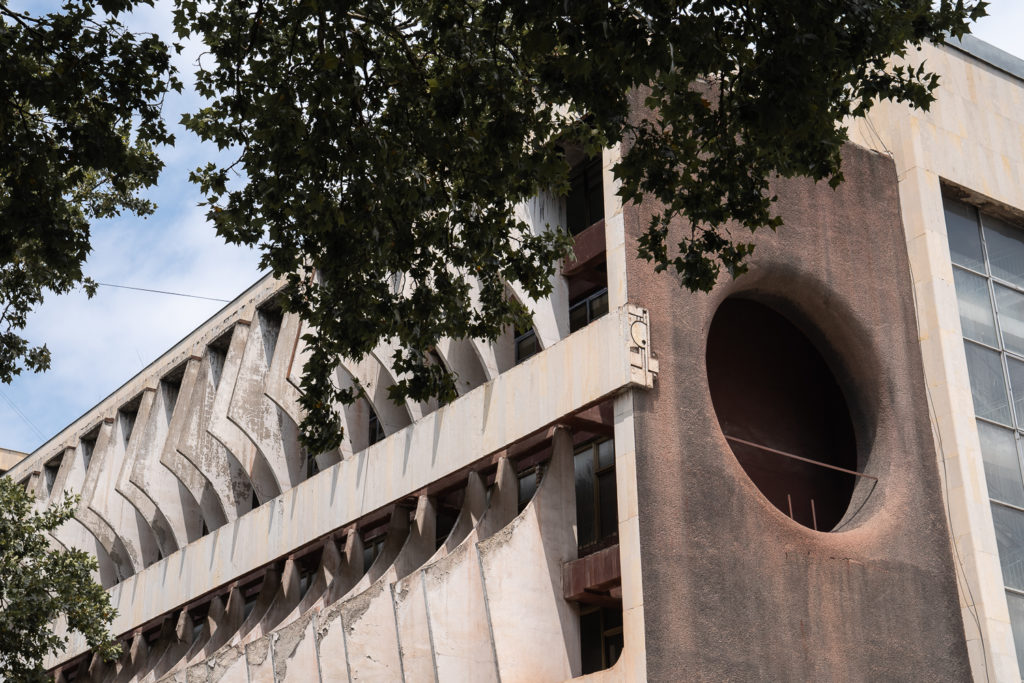
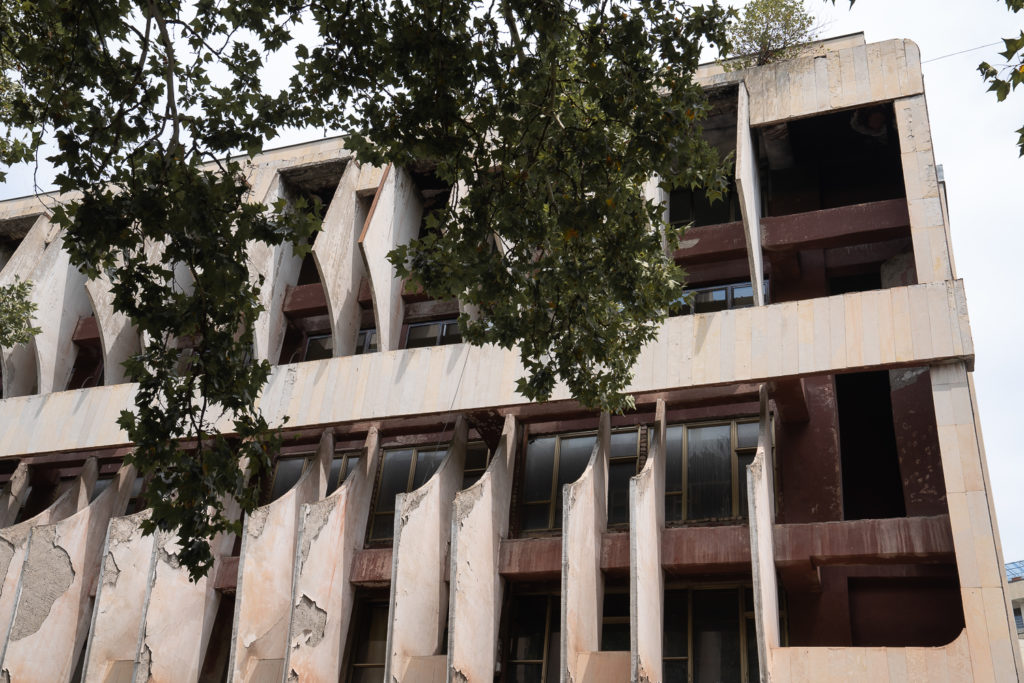
Laguna Vere Water and Sports Complex
The swimming complex with three pools, slide, a sports hall and a tribune for 5,500 spectators was completed in 1978. It hosted not only national but also international events. However, the complex became less and less profitable over time and finally closed in 2014. Today, the facility serves car dealers as a workshop and warehouse. Unfortunately, we were not allowed to enter the complex. However, we were able to sneak onto the grandstand from the back and look down on the now overgrown pool from above.
There is also a monumental mosaic preserved above the entrance area on the street. It is one of the longest mosaics in all of Georgia.
Architects and artists: Shota Kavlashvili, Guram Abuladze, Ramaz Kiknadze, Koka Ignatov
Completion date : 1978
Address: M. Kostava St 34
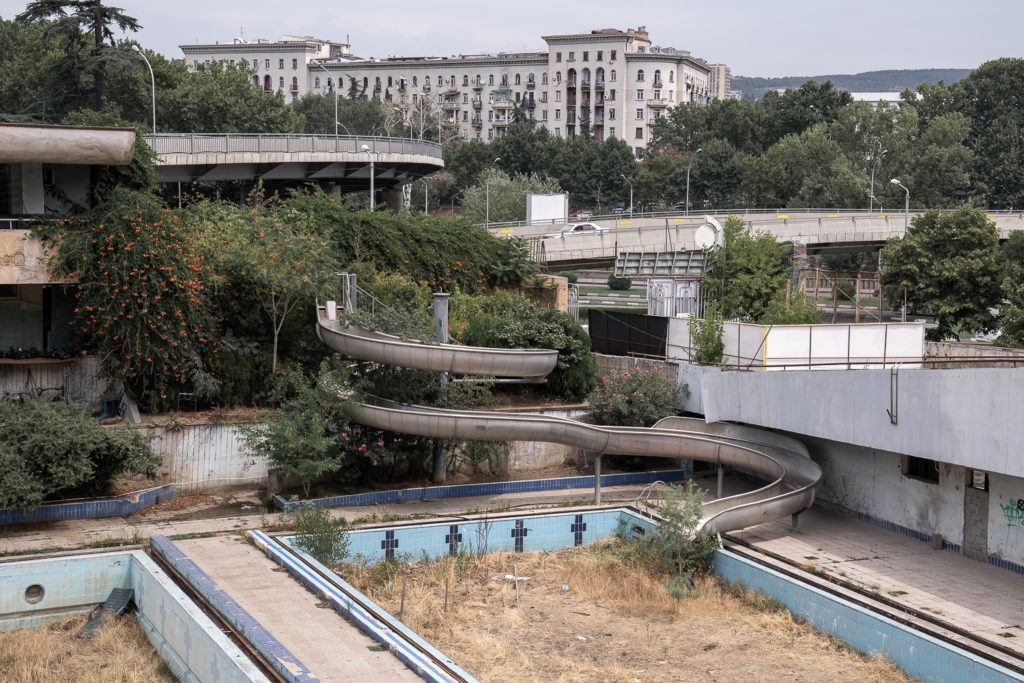

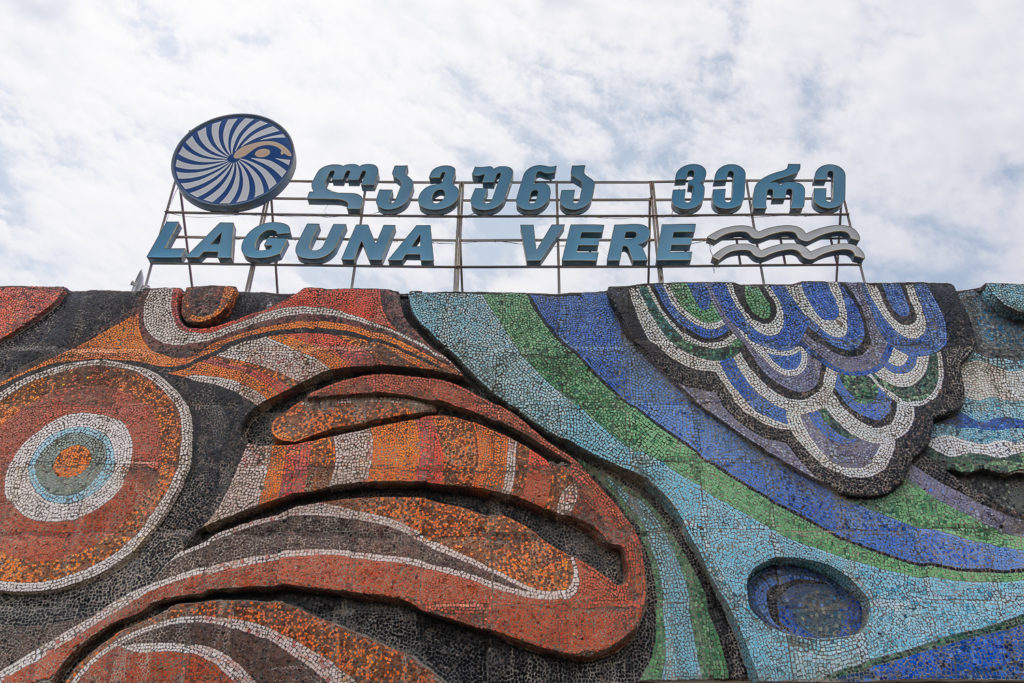
Mother Georgia
Twenty meters high "Mother Georgia" was erected to celebrate the 1500th anniversary of Tbilisi. In one hand she holds a bowl of wine with which she welcomes guests. But in the other hand she carries a sword with which she fights off enemies. The statue, originally made of wood and later covered with aluminum, was replaced by a new one in 1997.
Sculptor: Elguja Amashukeli
Completion date: 1958
Address: Sololaki St

Radio Computing Centre
The Radio Computing Centre belongs to the Radio Fortuna Holding. It was formerly also known as Transcaucasia Power Control Centre or Managing Computing Centre of the United Board of Energy System of Transcaucasia.
Architects:: S. Kavlashvili, G. Djanebirdze and S. Katsitadze
Completion date: 1973
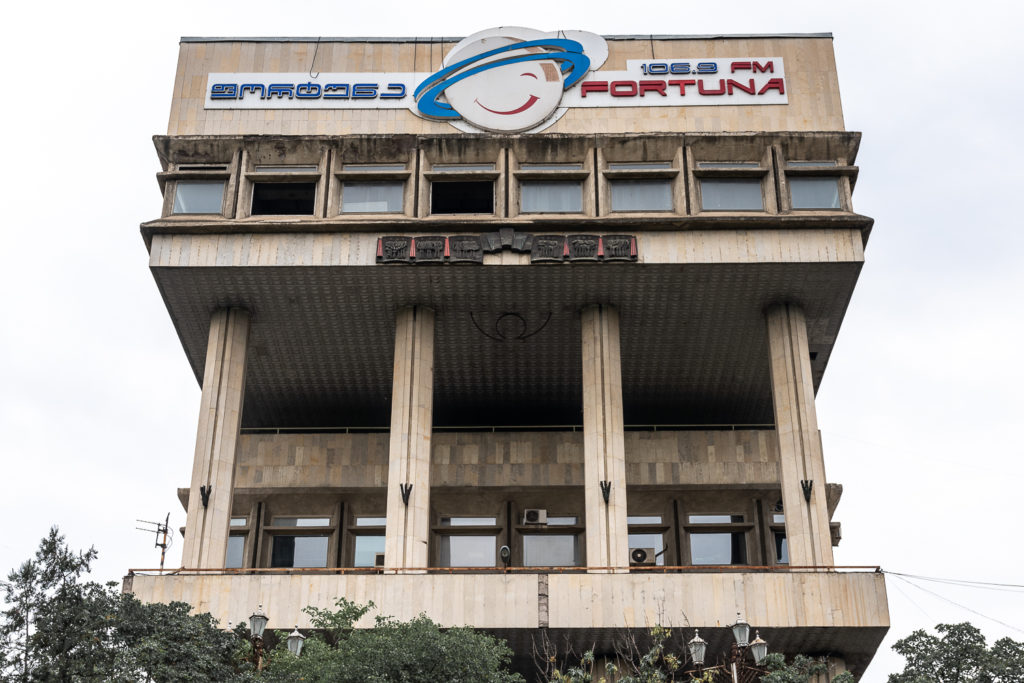
Other Buildings
Unfortunately, our time in Tbilisi was very limited. But since I immediately took the city into my heart, I hope to return soon. Because there are many more impressive buildings of Soviet architecture and in the style of Brutalism waiting, such as the campus of the University of Tbilisi.
Book Recommendations for Georgia
Do you want to know where the journey is going? Then I can recommend this travel guides* to you.
You can order the travel guides on Amazon by clicking on the pictures. If you buy a product via an affiliate link, I get a small commission, and you help me to keep filling Fernweh-Motive with interesting articles. The product will not be more expensive for you, and you will do me a huge favor.
Did you like the Soviet Architecture and Brutalism in Tbilisi? Do you have any questions about my article? If yes, then write me a comment!
Do you want to know when there are new articles on my blog? Then follow me on Facebook, Pinterest or Instagram. I would also be very happy if you share my article with your friends.
Recommendations for further Reading
Do you love Soviet architecture and lost places as much as I do? Then you might also be interested in my articles about Eisenhüttenstadt or about the GDR Architecture in Berlin.
